About Delhi
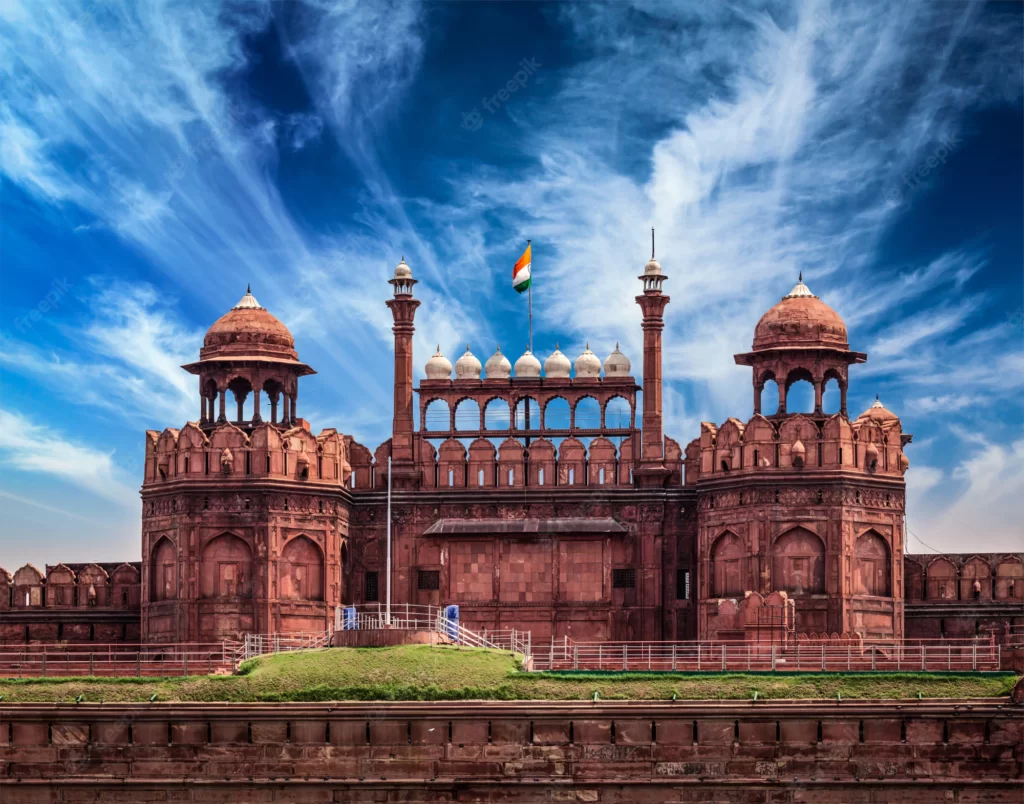
RED FORT
Delhi’s most famous monument, the Red Fort, stands as a powerful reminder of the Mughal emperors who ruled India. Its walls, which stretch for over two kilometers (1.2 miles), were built in 1638 to keep out invaders. However, they failed to stop the fort being captured by the Sikhs and the British. To take your imagination back to the ancient era, a one hour sound and light show of the fort’s history is held each evening.
- Location: Opposite Chandni Chowk, Old Delhi.
- Entry Cost: $5 or 250 rupees. Free for children under 15 years.
- Opening Hours: Sunrise until sunset. Closed Mondays.
- Sound & Light Show: In English at 7.30 p.m from November to January, 8.30 p.m. from January to April and September to October, and 9 p.m. from May to August.
JAMA MASJID
Jama Masjid is another marvelous treasure of the Old City, and is the largest mosque in India. Its courtyard can hold an incredible 25,000 devotees. The mosque took 13 years to build, and was completed in 1650. A strenuous climb to the top of its southern tower will reward you with a stunning view across the rooftops of Delhi. Be sure to dress appropriately when visiting the mosque or you won’t be allowed in. This means covering your head, legs and shoulders. Attire is available there.
- Location: Opposite Chandni Chowk, Old Delhi. Near the Red Fort.
- Entry Cost: Free, but a camera fee applies.
- Opening Hours: Daily, except when prayers are being held from 12.15 p.m. to 1.45 p.m. It closes just before sunset.
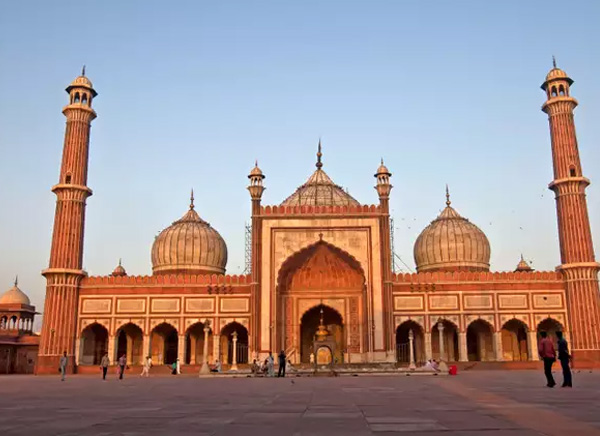
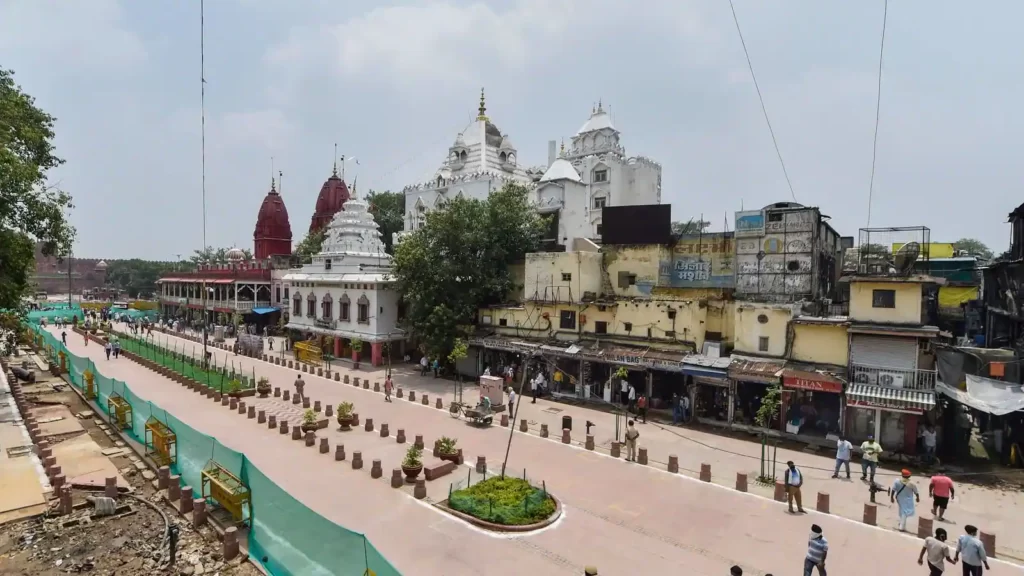
CHANDNI CHOWK
Chandni Chowk, the main street of old Delhi, is a shocking contrast to the wide, orderly streets of New Delhi. Cars, cycle rickshaws, hand-pulled carts, pedestrians, and animals all compete for space. It’s chaotic, crumbling and congested, but completely captivating as well. As one of the oldest and busiest markets in India, its narrow winding lanes are full of inexpensive jewelry, fabrics, and electronics. For the more adventurous, Chandni Chowk is an excellent place to come to sample some of Delhi’s street food. The renowned Karim Hotel, a Delhi dining institution, is also located there.
- Location: Old Delhi, near the Red Fort and Jama Masjid.
HUMAYUN'S TOMB
If you think Humayun’s Tomb looks a bit like the Taj Mahal in Agra, that’s because it was the inspiration for the Taj Mahal’s creation. The tomb was built in 1570, and houses the body of the second Mughal emperor, Humayun. It was the first of this type of Mughal architecture to be built in India, and the Mughal rulers followed it up with an extensive period of construction all over the country. The tomb is part of a greater complex that’s set amongst beautiful gardens.
- Location: Nizamuddin East, New Delhi. Near the Nizamuddin train station, off Mathura Road.
- Entry Cost: $5 or 250 rupees. Free for children under 15 years.
- Opening Hours: Sunrise until sunset, daily. It’s best viewed in the golden light of the late afternoon.
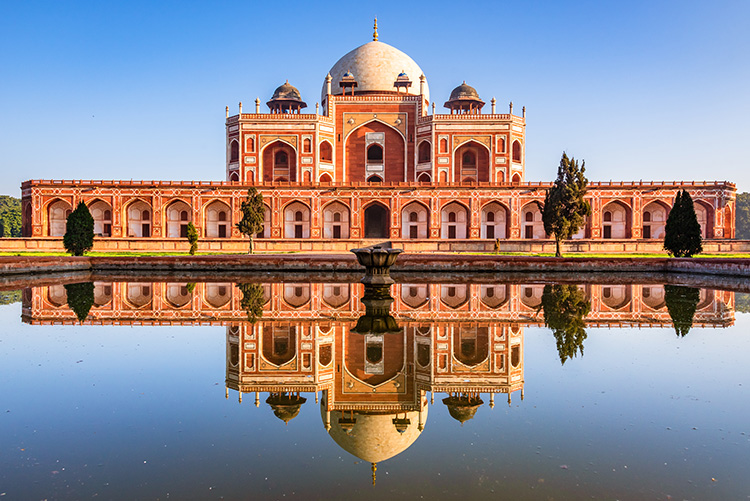
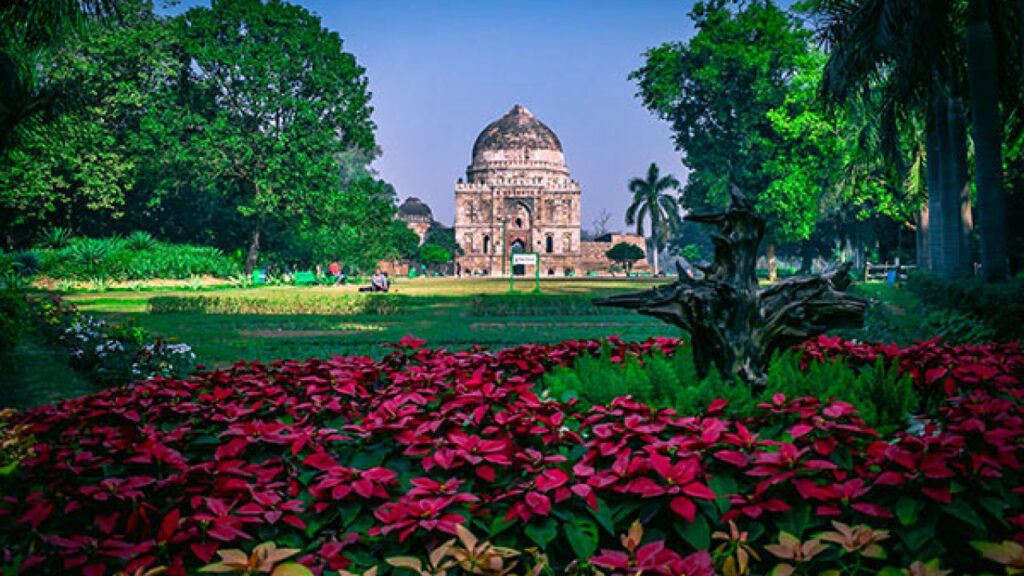
LODI GARDENS
Lodi Gardens provides a serene retreat from city life, and is the place to come if you’re feeling tired and worn out. The vast Gardens were built by the British in 1936 around the tombs of 15th and 16th century rulers. Joggers, yoga practitioners, and young couples all enjoy this park.
- Location: Lodi Road, not far from Humayun’s Tomb.
- Entry Cost: Free.
- Opening Hours: Daily, but Sundays are particularly busy.
QUTAB MINAR
 Qutab Minar, the tallest brick minaret in the world, is an incredible example of early Indo–Islamic architecture. It was built in 1206, but the reason remains a mystery. Some believe that it was made to signify victory and the beginning of Muslim rule in India, while others say it was used to call the faithful to prayer. The tower has five distinct stories, and is covered with intricate carvings and verses from the holy Quran. There are also a number of other historic monuments on the site.
Qutab Minar, the tallest brick minaret in the world, is an incredible example of early Indo–Islamic architecture. It was built in 1206, but the reason remains a mystery. Some believe that it was made to signify victory and the beginning of Muslim rule in India, while others say it was used to call the faithful to prayer. The tower has five distinct stories, and is covered with intricate carvings and verses from the holy Quran. There are also a number of other historic monuments on the site.
Visit the India Travel Forum for an interesting set of photos of Qutab Minar, posted by one of the members.
- Location: Mehrauli, south New Delhi.
- Entry Cost: $5 or 250 rupees. Free for children under 15 years.
- Opening Hours: Sunrise until sunset, daily.
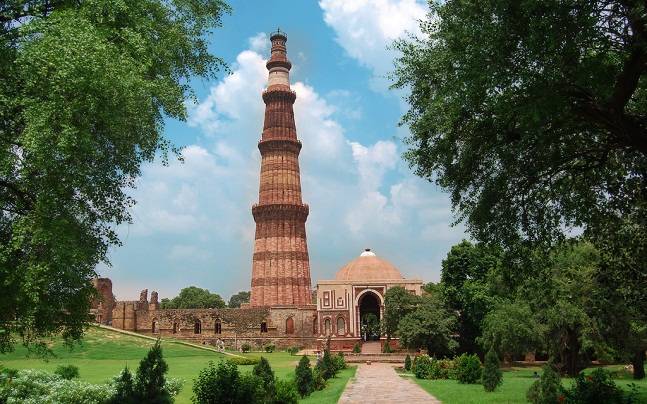
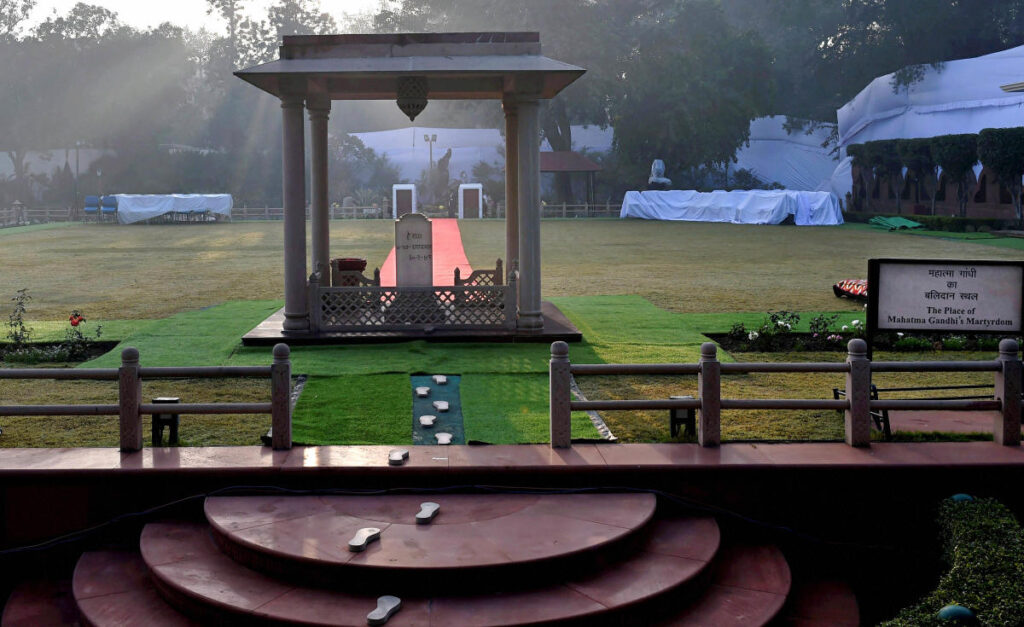
GANDHI SMRITI
A visit to Gandhi Smriti will show you the exact spot where Mahatma Gandhi, affectionately referred to as the Father of the Nation, was assassinated on January 30, 1948. He lived in the house for 144 days up until the time of his death. The room that he slept in, kept exactly how he left it, and the prayer ground where he held a mass congregation every evening are both open to the public. Plenty of photos, sculptures, paintings, and inscriptions are also on display.
- Location: 5 Tees January Marg, central New Delhi.
- Entry Cost: Free.
- Opening Hours: From 10 a.m. to 5 p.m. Tuesday to Sunday.
INDIA GATE
The towering archway of India Gate at the center of New Delhi is a war memorial, built in memory of the Indian soldiers who lost their lives fighting for the British Army in World War I. At night it glows warmly under floodlights, and the gardens that line its boulevard are a popular place to enjoy a warm summer’s evening.
- Location: Rajpath, near Connaught Place, New Delhi.
- Entry Cost: Free.
- Opening Hours: Always open.
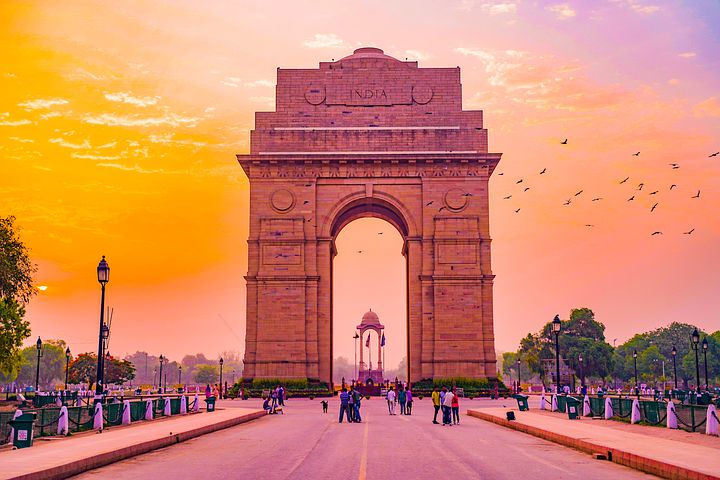

GARDEN OF FIVE SENSES
The Garden of Five Senses is another peaceful place to come to escape the hustle and bustle of the city. However, it’s no ordinary garden. As its name suggests, the Garden of Five Senses has been specifically designed to awaken all five senses. The sprawling 20 acre site beckons with a vibrant display of thoughtfully landscaped plants and flowers, waterfalls, rocks, quirky sculptures, murals, ceramic bells, and spiral walkways. The amphitheater often has live music. There are also restaurants and bars (check out the groovy Zoo at night) to relax in.
- Location: Said-ul-ajab village, M.B. Road, close to the Mehrauli heritage area in New Delhi. Near Saket.
- Opening Hours: Daily from 6.00 a.m. to 9.00 p.m.
BAHAI (LOTUS) TEMPLE
The Bahai Temple is commonly referred to as the Lotus Temple, as it’s shaped like a lotus flower. It’s particularly pretty at night, when it’s attractively lit up. Made out of white marble, the temple belongs to the Bahai Faith, which proclaims the unity of all people and religions. Everybody is welcome to worship there. The tranquil gardens and ponds surrounding the temple are also a great place for a relaxing picnic.
- Location: Near Nehru Place, south New Delhi.
- Entry Cost: Free.
- Opening Hours: Daily, from 9.00 a.m. until sunset.

Hotel Crest Inn, "Located in Delhi, in the largest shopping arcade of Asia, Karol Bagh, Crest Inn in Delhi offers international quality hospitality services.
Sitemap
Hotel Crestinn
- 4/27, Saraswati Marg,, West Extension Area, Karol Bagh,New Delhi
- +91-1141427700
- +91-9873355527
- info@hotelcrestinn.com